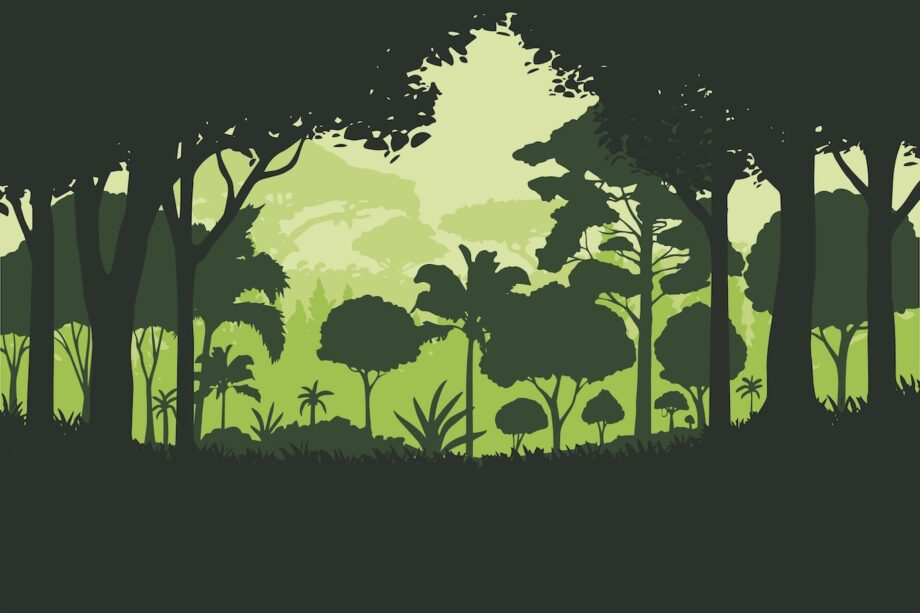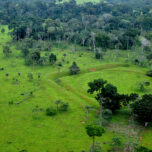July 12, 2022 —  As report after report continues to raise alarms, tropical deforestation has taken center stage among climate change culprits. In Brazil, Amazon deforestation exploded in the first quarter of 2022 after years of growth, and the entire forest is getting perilously close to a point of no return. And forests throughout the rest of the world are threatened by expansion of agriculture and mining, other land uses, and even organized crime.
As report after report continues to raise alarms, tropical deforestation has taken center stage among climate change culprits. In Brazil, Amazon deforestation exploded in the first quarter of 2022 after years of growth, and the entire forest is getting perilously close to a point of no return. And forests throughout the rest of the world are threatened by expansion of agriculture and mining, other land uses, and even organized crime.
Big-leaf mahogany, Swietenia macrophylla, stands out in the forests of Central and South America, not just for its size and commercial value but also for its role in ecosystems. The species is also grown in plantations and as part of reforestation efforts around the world. It removes significant quantities of carbon dioxide from the atmosphere and releases organic compounds that help prevent the sun’s energy from reaching Earth’s surface — further assisting in the fight against climate change.
Mahogany is everything you would want in a tree: tall and majestic, with leaves up to half a meter (1.5 feet) wide that cast cooling shade on the floor below. It is a towering pillar of many tropical forests, and even tree plantations in the Philippines, but the commercial value of its reddish-brown wood, renowned for both beauty and strength, has been its undoing in the wild.
By 1998, when the natural prevalence of big-leaf mahogany in tropical forests was last assessed, the tree had been reduced to about one-third of its historic range. The International Union for Conservation of Nature and Natural Resources (IUCN) categorized it as vulnerable to extinction in the wild — the same category as cheetahs and polar bears.
Despite the apparent overlap in places where deforestation has wreaked havoc and where the tree has been found historically, such as the southern Amazon, there have been no efforts at the global level to reassess populations of mahogany or to identify key remaining stands.
We must ensure that forest-dependent communities can benefit from producing sustainably sourced lumber for the global market, allowing it to remain a staple of their livelihoods.
After the 1998 assessment, logs and several wood products made from big-leaf mahogany grown in the neotropics were added to Appendix II of the Convention on International Trade in Endangered Species (CITES) in 2003. This means that to trade in these materials, countries must provide data that shows the timber was legally harvested and that its trade will not further endanger the species.
Fortunately, companies working with mahogany — like guitar manufacturer Gibson — increasingly value sustainably sourced supply chains and market their products accordingly to their environmentally conscious customers.
Illegal logging of mahogany still continues in Central and South America. However, there are certain places where deforestation of mahogany-rich forests has been reduced to almost nothing.
Mahogany has been thriving on some forest-dependent communities’ lands, where selective timber harvesting supports their communities but does not change the ecosystem irreversibly. But often it is difficult for these small communities to ensure that timber harvested in this way is accepted as sustainably sourced because they lack the marketing power of, say, a multinational corporation. Without this marketing boost, their forest products often fail to gain traction in global markets.
We must ensure that forest-dependent communities can benefit from producing sustainably sourced lumber for the global market, allowing it to remain a staple of their livelihoods. To do so requires training, technical and financial assistance to help communities meet the reporting requirements in sustainable sourcing policies and regulations, and better vigilance to ensure that illegal logging cannot compete with community forest ventures.
Maintained Over Time
One of the places mahogany has been thriving is the Yucatan Peninsula, where forest-dependent communities harvest and sell mahogany timber in limited volumes for their livelihoods.
In the Petén region of Guatemala, a study supported by my organization found that community land holdings where mahogany trees were harvested in the mid-2000s under sustainable forest management parameters “will recover or exceed initial commercial densities and volumes during cutting cycles between successive harvests.”
In other words, the forest environments are being maintained over time — in stark contrast to the rest of the country, which lost 21% of its total tree cover over the past two decades.
Vigilant monitoring of valuable timber species would help reveal the damage that two decades of deforestation and illegal logging has wrought — and steer a path that maintains both threatened species and the valuable forests in which they grow.
Mahogany is not the only valuable tree in the rainforest, of course. A wide variety of valuable rosewoods grow throughout the tropics, for example, and many are endangered. Relentless demand for the wood — used for high-end furniture and other finished products — provides extreme commercial pressures.
The timber of ipê — comprising seven species in Central and South America — is strong, resists fungal infections and insect damage, and has the same fireproof rating as concrete and steel. Some ipê species have not been overharvested to the same extent as mahogany and rosewoods, but illegal logging in the Amazon rainforest still targets the species.
We need better enforcement of existing laws and treaties to prevent illegal logging, but equally we must ensure that sustainably sourced lumber remains a staple of livelihoods for forest-dependent communities like those in the Yucatan. Vigilant monitoring of valuable timber species would help reveal the damage that two decades of deforestation and illegal logging has wrought — and steer a path that maintains both threatened species and the valuable forests in which they grow.
In the end, economics must play a leading role if we are to turn the tide on tropical deforestation. The conservation of high-value timber and other forest products will be more successful when sustainable trade produces viable returns for forest owners and managers. This is one of the surest paths to reducing the magnitude and impacts of climate change for generations to come.
Editor’s note: The views expressed here are those of the author and not necessarily of Ensia. We present them to further discussion around important topics. We encourage you to respond with a comment below, following our commenting guidelines, which can be found on this page. In addition, you might consider submitting a Voices piece of your own. See Ensia’s Contact page for submission guidelines.
Related Posts
Ensia shares solutions-focused stories free of charge through our online magazine and partner media. That means audiences around the world have ready access to stories that can — and do — help them shape a better future. If you value our work, please show your support today.
Yes, I'll support Ensia!




